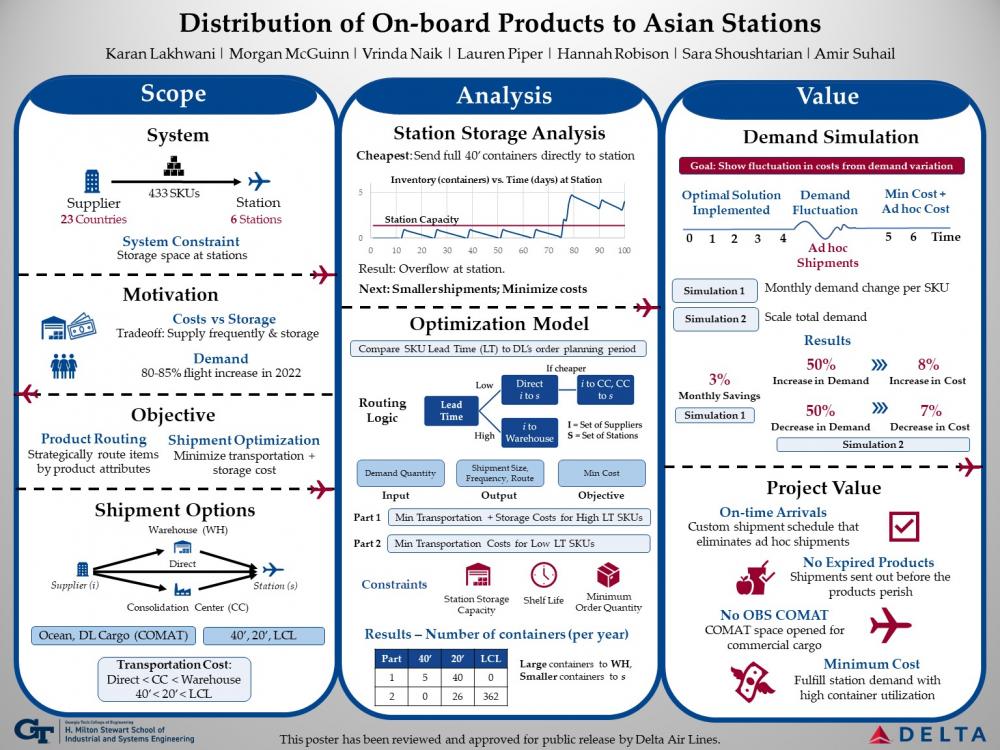Client Context
Delta Air Lines’ On-Board Services (OBS) department ensures that all on-board items are available to customers on Delta flights by managing inventory levels throughout the supply chain at consolidation centers (CCs), warehouses (WHs), and stations (airports). The COVID-19 pandemic reduced flight demand to the Asian market, which allowed Delta to ship Stock Keeping Units (SKUs) ad-hoc via Company Material, an Asian CC, and direct ocean shipments in lieu of an Asian WH. However, with a full flight schedule set to return in 2022, these methods will become expensive and inefficient.
Project Objective
Delta is seeking a low-cost solution to meet the increasing demand in the Asian market. To solve this distribution problem, the team evaluated the distribution of SKUs from supplier to station via direct ocean shipments, WH, and CC. Each product will be assigned to a distribution route that minimizes cost while meeting station capacity, lead time (LT), minimum order quantity (MOQ), shelf life, and station demand constraints. The team developed an optimization model to determine the shipment method that minimizes the cost associated with delivering SKUs to Asian stations. The optimization model provides a shipment schedule that Delta can reference in lieu of the current ad-hoc system
Design Strategy
The team started with a blank-sheet approach and modeled the OBS distribution system as a pull system. First, the key constraints for the system were identified. Next, an estimate for the 2022 demand for OBS products was forecasted and broken down by station. Then, station storage capacity analysis was conducted to evaluate the extent to which it was a constraint. Finally, an optimization model was developed to determine shipment frequency by SKU.
Deliverables
Optimization model - The model uses SKU classification cutoffs and the schedule set by cost minimization algorithms. The model is coded in Gurobi, Python, and Excel. The model’s goal is to minimize cost by optimizing the shipment schedule of SKUs to warehouses and stations.
Financial and Systems Strategy Report - This report includes a cost analysis detailing the estimated costs from the proposed solution. The report breaks down the optimization model into objective functions, data inputs, and constraints to provide a clear picture of how the solution was developed. It also includes a guideline for Delta on how to format their input data to use Optimization as a tool


